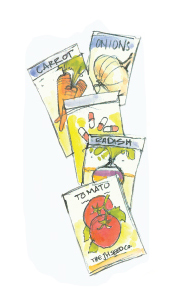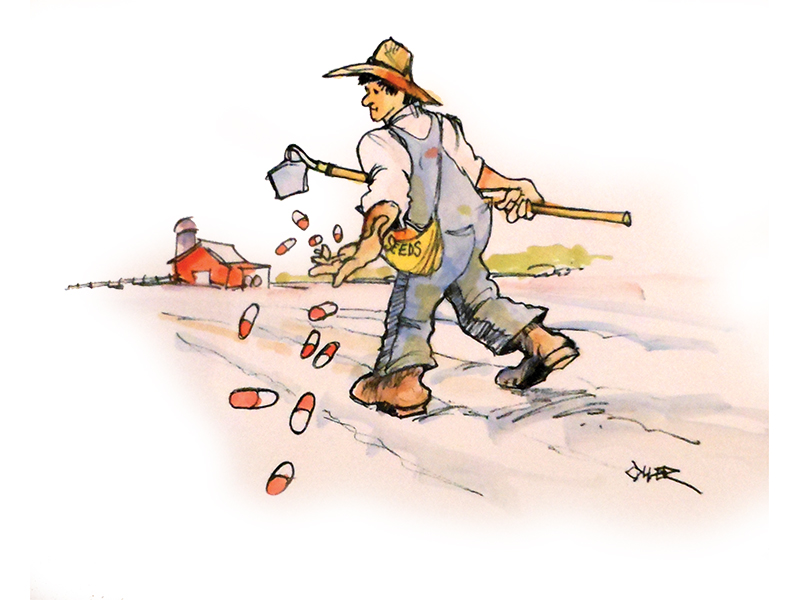The Search for a Legacy of Healing
After living for ten years with crohn’s disease, the legacy of pain that Mee McCormick inherited from her mother revealed itself fully for the first time. As she lay on the floor in pain, the face that would encourage her to heal herself completely was not that of her mother’s—who died years before at the age of 39 after slowly bleeding to death through the inflamed lining of her intestines, – it was her daughter’s.
“I had a moment where I looked at my daughter,” says McCormick, “and in that moment, as I was on the floor in pain—literally on the floor—I saw in my 5-year-old’s face, myself.”
As a child, McCormick had watched her own mother suffer, and when she was about 25 years old she started to develop the same symptoms of Crohn’s disease that had afflicted her mother—constant pain, malnourishment and intestinal ulcers.
“Over time, I lost the ability to eat,” she says, “I was starving, hungry all the time and every time I ate, I suffered.”
These changes in her body occurred in spite of her best efforts to break free of the patterns of her mother’s life. She went to school. She didn’t marry young. She made choices different from her mother’s. As a result, she ended up with a very successful life.
Still, there she was, suffering.
That day, as McCormick looked into the face of her daughter, she finally realized that the one place she hadn’t healed was her intestines. It was this gut instinct about her own body that would lead McCormick away from a legacy of pain and toward one of healing.
Starting Down the Road to Healing
McCormick’s search for healing would take her into, and back out of, several doctor’s offices. Her physicians offered the standard assortment of pills—medications aimed at preventing infection and controlling the inflammation in her intestines. Like many drugs, though, they came with several unpleasant side effects.
“I knew that I would never survive those side effects,” she says. “I was 89 pounds and I couldn’t drink water. How could I ever take 20 pills a day, let alone 10?”
For McCormick, food became the solution. It was a choice driven by a simple logic, the same kind that pervades much of the food-as-medicine movement.
“If food is the only thing that’s touching the lining of my intestines,” she says, “then food has got to fix it.”
This was no small task, either, given that an ulcer completely encircled part of her small intestine.
In spite of her faith in the healing power of food, McCormick admits that she is not opposed to doctors or prescription medications; but she was determined to give food a chance to heal her gut. As she left her gastroenterologist’s office, she promised to come back after a year if she wasn’t better. Six years later, she still hasn’t returned.
Cooking Your Way to Health
There is no shortage of books that teach people how to use food to heal, but McCormick found guidance from Ginny Harper, a woman who had cooked her own way to recovery from Crohn’s disease.
During her first cooking class with Harper, McCormick was completely overwhelmed. Strange ingredients, new techniques, it was a world far removed from supermarket aisles packed with ready-to-eat processed foods.
 Even though she couldn’t stand for more than 10 minutes at a time due to her chronic pain, McCormick was determined to do her best. After the first class, she went home with four recipes. She tracked down the ingredients—even the unusual ones—and took the extra steps needed to cook wholesome meals successfully.
Even though she couldn’t stand for more than 10 minutes at a time due to her chronic pain, McCormick was determined to do her best. After the first class, she went home with four recipes. She tracked down the ingredients—even the unusual ones—and took the extra steps needed to cook wholesome meals successfully.
McCormick’s perseverance paid off. Within a week of eating the new diet—which resembled baby food in the beginning—she felt like a different person. She was finally able to eat and drink simple foods. At six months, she was eating whole plates of food.
The real change would come later, again in the presence of her children.
“At two years, I was running behind my kids at the park,” she says, “and I stopped, and when I went to hold my stomach, I realized that my disease was gone, it was really gone.”
Today McCormick is able to eat out at restaurants, at home and while traveling—something unheard of at the height of her disease. She shares some of her healing recipes in her new book, “My Kitchen Cure: How I Cooked My Way Out of Chronic Autoimmune Disease with Whole Foods and Healing Recipes.”
Rediscovering the Healing Past of Food
Using food as medicine is nothing new. The ancient Greek physician Hippocrates said “Let medicine be thy food and let food be thy medicine.”
In those days, however, doctors didn’t have the vast array of pills for conditions ranging from asthma to high cholesterol, to impotence and depression. That meant food—including medicinal herbs—was one of the best options for healing.
The recent food-as-medicine movement seeks to rediscover some of the wisdom gained over hundreds of years by doctors treating illnesses with food harvested from the earth instead of medicine developed in the basement of a drug company.
In some cases, food works remarkably similar to prescription drugs. According to the National Cancer Institute, ginger can reduce nausea in patients undergoing chemotherapy, similar to pharmaceutical drugs like Zofran. A 2013 study in the Journal of Gastroenterology also found that peppermint oil is effective at relieving symptoms of irritable bowel syndrome.
These are just two examples of food being used to treat specific symptoms, a method that mimics the western medicine concept of treating disease rather than promoting wellness. There are more. The real power of food, though, is much more subtle.
The First Line of Defense Against Disease
Scientists have known for decades that food provides the body with nutrients— vitamins, minerals, and building blocks like amino acids and fats—that support health and encourage healing.
“Our lifestyle and diet are extremely important in preventing and treating chronic illness,” says Amber DeVore, a registered dietician in Williamsburg, Va. “Food should always play a part in helping individuals get well or manage their illness.”
A 2007 editorial in the American Journal of Clinical Nutrition, though, pointed out that recent research has shown that food also stimulates the release of hormones in the body that affect how our genes function. By changing our bodies at the genetic level, food is more important to our health than even Hippocrates imagined.
“We have let it slip under the radar screen, but food is far more powerful than any drug,” says Barry Sears, Ph.D., a leading proponent of anti-inflammatory nutrition and author of “The Zone”, “because it affects hormones, and hormones are one hundred times more powerful than drugs.”
Coupled with the effect of diet on our hormones is the ability of certain foods to reduce—or increase—inflammation in the body. While anti-inflammatory diets—including The Zone Diet—are popular, not all inflammation is bad. During infection or injury, inflammation is a natural response that helps the body heal.
However, long-term inflammation—like the kind spurred by poor diet—is actually harmful. “If you look at chronic disease,” says Sears, “it all basically emanates from inflammation.” This includes common conditions like obesity, type 2 diabetes, cardiovascular disease and autoimmune conditions such as Crohn’s disease.
Food, then, is the body’s first line of defense against diseases that affect nearly half of American adults and are responsible for seven out of every 10 deaths each year in the U.S., according to the Centers for Disease Control and Prevention.
It’s also within our grasp
“The one thing you can control completely to reduce diet-induced inflammation is your diet,” says Sears. “That’s going to go a great distance toward making any drug work much better.”
Food as Medication
For McCormick, food was the solution to her Crohn’s disease. Others facing diseases with limited pharmaceutical options may have similar success healing themselves in the kitchen.
“Many conditions or diseases, such as irritable bowel disease, fibromyalgia and migraines can be reversed with diet alone,” says DeVore, “often through exploring possible food sensitivities.”
With most chronic conditions, drugs can still be useful. Diet, though, remains a strong component of healing, as long as you give it the right amount of respect.
“It doesn’t mean that food can replace medicine,” says Sears, “but if you don’t treat food like a medicine, like a drug—to be taken at the right dosage at the right time—then you’re basically spitting into the wind.”
Ideally, this means improving your diet before your health deteriorates.
“A lot of the inflammation that’s being generated by the diet doesn’t happen overnight,” says Sears. “It occurs over a period of years, until there’s enough organ damage that we call it chronic disease.”
Unfortunately, life gets in the way, along with the standard American diet—one that emphasizes the convenience of processed foods over the wholesomeness of homemade meals, and is loaded with unhealthy fats, added sugars and extra sodium.
The onset of chronic disease—even the early signs—is a wake-up call, your body’s way of telling you to welcome healthy food back into your life.
Rethinking Your Relationship With Food
Rethinking the place of food in our lives also means taking control of our own health.
“It’s all about the food,” says Sears. “How the food affects our hormones. How those hormones can affect the expression of our genes; and how the expression of our genes can either maintain this good health or lead us to poor health.”
Finding a healthy diet that works for you, though, can take some time. McCormick explored several diets—macrobiotic, primitive, native healing—before settling on a combination of foods that fit her needs.
Along the road to recovery, she realized that the common thread connecting all of the healing diets is this: eating a variety of real food.
With the confidence of someone who has left suffering behind her, McCormick brushes aside the thought that it’s difficult to change your diet. “No, it’s a decision,” she says. “Does it take time and management? A hundred percent.”
Although you can expect to work hard, changing your diet—and your relationship with food—can start with trying four nutritious recipes.
“We’re really in the beginning of an awakening around food,” says McCormick, “and the relationship of what it does in the body and how it can keep us well.”




